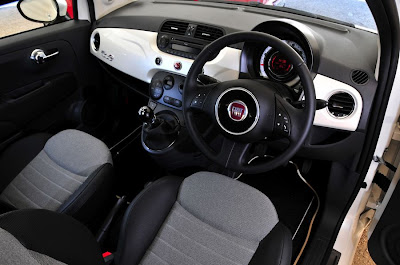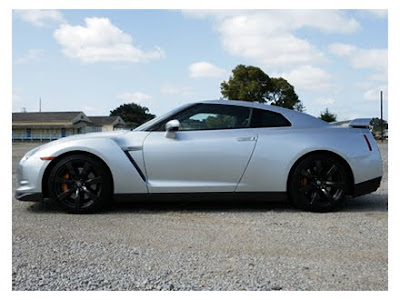* For : Style, practicality, desirable image
* Against : Rear visibility, price premium
Styling/image
Glance at the new 500C and you’d be forgiven for thinking it looks identical to the funky fixed-head variant. However, look a little closer and you’ll spot the addition of fabric roof section. Like the Fifties original the newcomer isn’t a full convertible, but instead uses a full-length canvas sunroof that stretches from the top of windscreen to the tailgate. Only two trim levels are available – entry-level Pop and luxurious Lounge. Alloy wheels are standard on the range topper, while both versions can be specified with a wide-range of eye grabbing body graphics.
 |  |  |  |
With so few modifications to the exterior, the 500C’s characterful cabin is almost identical to the standard car. That means you get a decent amount space, although taller adults will find conditions in the back a little cramped. Noise insulation is excellent with the hood up, while the roof can be lowered at speeds of up to 37mph. On the other hand, rear visibility is poor whether the soft top is up or down. At least luggage capacity is reasonable at 182-litres, which is just three litres down on the hatchback.
Engine/performance
Buyers get the choice of two petrol engines – a 69bhp1.2-litre and 100bhp 1.4-litre. The smallest unit is smooth and peppy, but struggles to keep up with fast moving traffic. Keen drivers will find the larger 1.4-litre powerplant a lot more responsive, although it lacks refinement. For diesel fans there’s the excellent 75bhp 1.3-litre, which blends decent punch with strong economy. A five-speed manual gearbox is standard, while the 1.4-litre gets a six-ratio unit. There’s also the option of the firm’s clunky Duologic automated manual transmission for the petrol-engined models.
Driving Experience
With the roof in place the 500C driving experience is identical to that of the hatchback. With so much of the original bodywork left in place, the Italian barely suffers from scuttle shake, even over rough surfaces. The steering is direct and the car’s small dimensions result in great agility, particularly around town.While it’s not as fun to drive as the MINI convertible, the Fiat will still bring a smile to your face, particularly when the roof is stowed and the sun is shining.
Ownership costs
Compared to the MINI convertible, the 500C represents cut-price wind-in-the-hair motoring. However, the Fiat is around £3,000 more than the equivalent hatchback model, despite only offering a £1,000 worth of extra standard kit. At least the diesel model will help claw back the extra outlay with its excellent fuel returns of 67.3mpg. All models benefit from lengthy 18,000 mile/three year service intervals, which help to keep maintenance bills down.
Safety/environment
The hatchback scored a maximum five stars in EuroNCAP testing – and with so few changes to the body it’s likely the cabrio will be equally as strong. All versions get seven airbags, while electronic stability control is standard on Lounge versions and a £300 option on the Pop. The diesel is the eco-friendly choice because it emits only 110g/km, which results in a low annual tax bill of £35 VED.
Our Choice: 500C Lounge 1.4












































